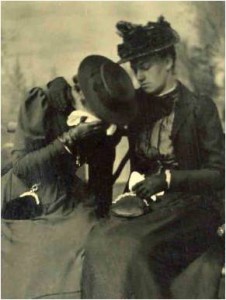The history of emotions starts 2012 in good health and promises to continue to be a thriving and growing area of historical interest, both among scholars and more widely in the year ahead. By my reckoning there were at least 20 international conferences in the field in the last twelve months, hosted in locations including London, Oxford, Berlin, Geneva, The Hague, Copenhagen, Aix-en-Provence, Istanbul, Bucharest, Adelaide, and San Diego.
Notable books in the field published in 2011 included Patrick Coleman’s Anger, Gratitude and the Enlightenment Writer, Susan Matt’s Homesickness: An American History (see interview with Susan Matt on this blog), and Ute Frevert’s Emotions in History: Lost and Found (the Natalie Zemon Davies Lectures). Two history of emotions book series have been launched, one edited by Ute Frevert and Thomas Dixon for Oxford University Press, the other edited by Susan Matt and Peter Stearns for the Univeristy of Illinois Press.
Several special issues of journals have come out or are forthcoming devoted to various aspects of the history, philosophy, and science of emotions, as well as to social and cultural theories of affect (see the archives of the History of Emotions email list for details). In 2012 there will be more such journal numbers forthcoming, including one on Emotional Styles edited by Benno Gammerl as a special issue of Rethinking History.
At Queen Mary, we hosted events in the last twelve months on ‘Mastering the Emotions: Control, Contagion and Chaos, 1800 to the Present Day’ and on ‘Wandering Feelings: The Transmission of Emotion in the Long Nineteenth Century’. In September 2012 we will be hosting the Society for the Social History of Medicine’s biennial international conference – on the theme of ‘Emotions, Health and Wellbeing’. Our colleagues running centres for the history of emotions in Berlin and Australia have very active programmes of research and events, and many more centres are springing up in Europe, and around the world, and entering into collaborations on all sorts of projects.
The History of Emotions email list has been growing rapidly and now has over 900 subscribers. Anyone who subscribes to the list is welcome, indeed encouraged, to post announcements about events and publications of relevance to the broad area of history of emotions.
This blog, launched eight months ago in May 2011, currently receives about 2,500 visits per month. Thanks to the efforts of the members of the Queen Mary Centre for the History of the Emotions, including our new blog editor and Policy Director Jules Evans, and also the guest bloggers he has recruited, there have been fascinating posts on a wide range of historical, political, and cultural topics. If you would like to suggest a topic for a blog or offer to write a guest post yourself, do get in touch.
Some of the most read posts of the last few months have been:
Åsa Jansson’s review of the latest Lars von Trier film: ‘The story of Melancholia‘.
Thoughts on Lucien Febvre inspired by conferences at The Hague and at Queen Mary: ‘Sensibility and history‘.
Jules Evans on ’emotion work’ in the Occupy movement: ‘Occupy your heart chakra‘; and on assisted suicide: ‘Suicide and the law: Stoics versus Christians‘.
Tiffany Watt-Smith’s reflections on laughter inspired by a talk by Quentin Skinner: ‘Laughter and control‘.
Finally, two recent guest bloggers have posted great pieces about the history of love.
Sally Holloway, in the most popular post of 2011, wrote about the language and symbolism of the heart in 18th-century courtship: ‘Love darts and broken hearts‘
And, starting 2012 on a romantic note, Lesel Dawson reviewed Simon May’s new history of love: ‘A longing for belonging‘.
Happy new year!
p.s. You can now follow us on Twitter @emotionshistory




Pingback: Happy Birthday to Us! Top 10 Posts | The History of Emotions Blog